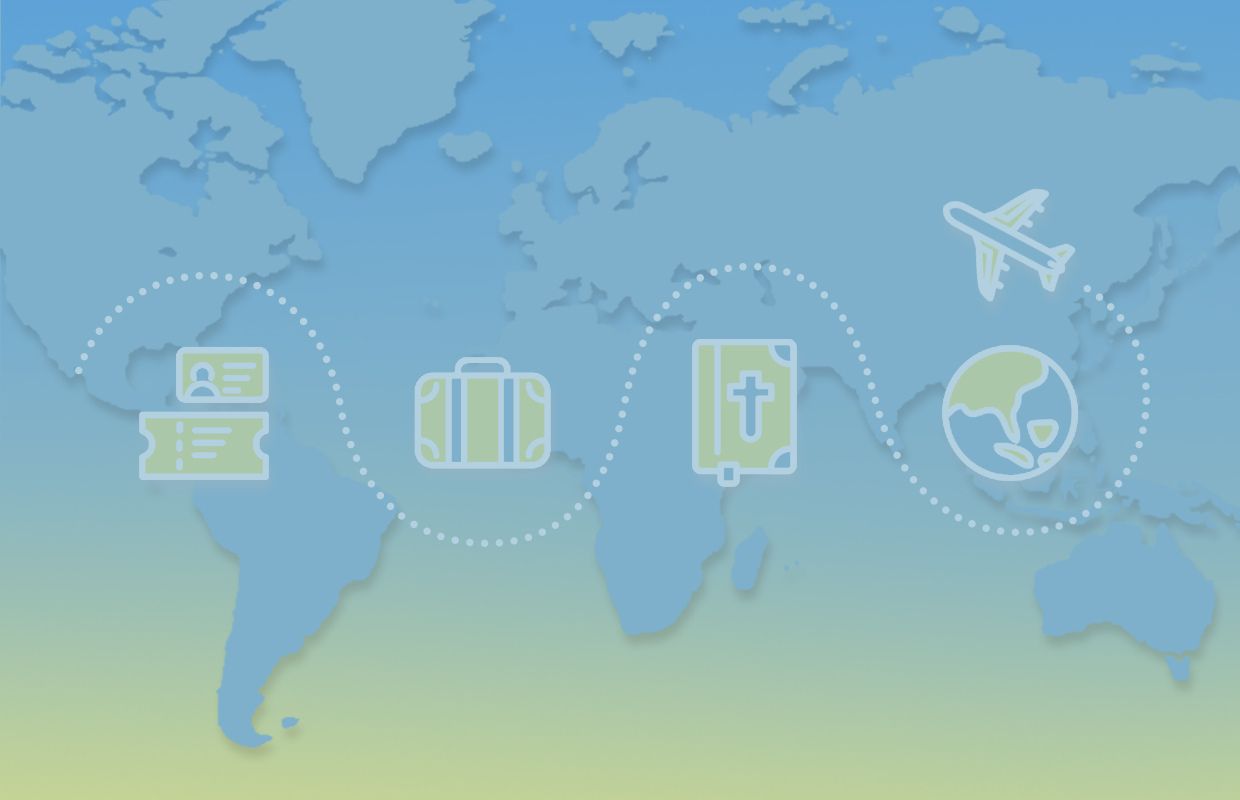‘Have you found a way to include more Majority World staff in your organisation?’
This is a commonly asked question when meeting with fellow leaders of international mission organisations.[1] Most of their staff are still Western, despite acknowledging for years that better representation of the diversity of the global church is needed. A major obstacle is the lack of a sustainable financial model for Majority World staff,[2] for whom the traditional model of individual support-raising is often challenging. This raises the question: Are there ways to make international missions more sustainable and less dependent on the West?[3]
Individual Fundraising and Majority World Staff
Hudson Taylor (China Inland Mission, 1832‒1905) is often mentioned as the father of ‘faith missions’. He went into missions as a lay person without support structures, trusting God for needed provisions. This was based on Jesus’ instructions to his disciples: ‘Take nothing for the journey—no staff, no bag, no bread, no money, no extra shirt’ (Luke 9:3). The Western mission movement flourished in the 19th and 20th centuries using Taylor’s model.[4]
Pragmatism may also have given rise to individual fundraising. Many modern agencies initially broke away from established societies and required an alternative system. In that context, individual fundraising worked well.[5]
The financial systems of most mission organisations are now more diverse than at their foundation. Given increased government requirements in many countries, most missions now have paid home office staff overseeing finances, human resources, IT, communication, etc. Most still require self-supported staff to surrender a percentage of their income (often about 10 percent) toward overhead costs. However, for many, this does not generate sufficient funding for the support structures needed to run an effective organisation. Many organisations also choose to raise special support for their home offices or take a percentage from ministry funding.
Other changes are made to mitigate challenges for mission workers—some organisations distribute surplus funds from fully-funded staff to others with a shortage. Others have voluntary processes for staff doing well to help those who are struggling. However, in most international missions, the basic principle is that individual workers are responsible for raising their own support. For Majority World staff working with international faith missions, individual fundraising has proven to be challenging. A major reason is the different economic context—their friends and relatives live on a significantly lower economic scale than their Western counterparts. It is, therefore, difficult for local churches and friends to support people joining an international mission agency. Only in economically-advanced countries such as Singapore and South Korea has individual fundraising been possible. Elsewhere, local mission workers struggle to raise support and, if they succeed, are often highly dependent on overseas contacts.
Cultural factors are also significant. Most Majority World believers belong to communalcultures where the group is more important than the individual. The responsibility for trusting God to provide belongs to the organisation or church, not the individual.
Lack of vision can be another challenge. Individual fundraising assumes that fellow believers feel a sense of responsibility for mission, yet many Majority World countries have been on the receiving end of missions for centuries. The idea that they themselves could send missionaries is relatively new. Still, countries such as South Korea, Singapore, the Philippines, Brazil, and Nigeria have growing and impactful overseas mission movements.[6]
Even within the West, the next generation is asking serious questions about the self-supported model and would rather have the organisation do the fundraising. Research on the reasons for this is not yet available, but one factor might be that millennials and Gen Z are typically eager to make a unique contribution. Their thinking may go like this: ‘If I do not cost the organisation anything, how do I know I am needed?’

Biblical Basis
Much has been written by mission agencies about the biblical basis for faith missions. However, the Bible itself does not promote one particular funding model. Acts 18:3 tells us that Paul was a tentmaker by trade and used it to support himself. 1 Timothy 5:18 shows that some kind of salary was also common practice. Further, from Philippians 4:10–20, we know that Paul also received financial support from ‘sending churches’, and elsewhere, we read that he collected money from newly-planted churches. From a biblical perspective, it is not the method but the attitude that seems to matter: ‘For your heavenly Father knows that you need all these things. But seek first the kingdom of God and His righteousness, and all these things shall be added to you’ (Matt 6:33).[7]
Learning from Indigenous Missions
Many indigenous mission organisations in the Majority World take responsibility for providing for their staff, some of them raising funds from within their country. Good examples are the Friends Missionary Prayer Band and the Indian Evangelical Mission, which have over 50 years of experience building strong connections with churches and individuals who faithfully pray and give. Other indigenous organisations build salaries into the budgets of their projects, and many encourage―or at least allow―their staff to have a side business to supplement their income. What can we learn from these indigenous missions models?
Today there are three general models for financing international mission workers: 1) self support, 2) organisational support, and 3) a hybrid. Each has variations, strengths, and weaknesses. The most common are shown below:
| Model | Common name | Basic features | Source of income | Strengths | Weaknesses |
| Self- supported | ‘Faith Mission’ | Mission workers raise their own support | Donations by friends, churches, etc. | Prayer support accompanies money Strong sense of ownership of the individual’s ministry | Works mainly in economically advanced countries Depends on the individual and their network |
| ‘Tent-making’ or ‘Business as Mission’ | Mission workers earn income through employment | Business or job salary | Integrates the worker in society Not dependent on external funding | Business often takes time away from ministry Business requires skill sets many mission workers lack | |
| Institutionally supported | ‘Organisational Mission’ | Employed by the sending mission agency | Mission agency | Less financial burden on mission worker Strong loyalty and alignment with the organisation | Limits the number of workers to the fundraising capacity International missions are not equipped to employ |
| ‘Church mission’ | Employed by church and seconded to agency | Church or denomination | Less financial burden on mission worker Strong bond with sending church | Extra bureaucracy as churches also have policies Dual loyalty of staff to church and agency | |
| Hybrid | Variety of income sources encouraged | Combinations of the above | Reduces risk Increases flexibility | Hard to manage Complex accountability |
In general, it seems that for staff from the Majority World, self-support from friends and family is the most challenging model—yet that is the one most commonly-used in international mission organisations. In reflecting on the indigenous models, I propose that financial sustainability for international mission organisations involves more than just changing the individual support system. Changes are needed in thinking, structures, and practices. Here are some initial thoughts:

Thinking
- Western dominance: ‘West to the Rest’ thinking is quite prominent regarding funding. Visionary leadership and a new narrative are needed to change that.
- Mental models: There are values and assumptions connected to the self-support model. Dialogue with other missions and missiological reflections with staff can help to discover and challenge those.
For example, one mission organisation conducts mental model workshops with their leaders worldwide to identify values and assumptions that need to be challenged for sustainability to grow.
Structures
- Localisation: For local believers to gain a sense of (financial) ownership, country offices need to have their own boards, majority local leadership, and sufficient space to contextualise the vision of the global organisation.
- Organisational development: To help local offices present themselves well and allow for different streams of income, significant training and development of local boards and leaders is often needed.
- Projectisation: Grouping ministry activities into projects to present to (local) funders can make contribution easier and more attractive. Salaries for local staff can be built into project budgets.[8]
For example, a country office in Indonesia adopted a local name and local board while remaining loyal to the global vision of their organisation. Some of their projects are now financed by local churches who no longer see them as ‘foreign’.
Practices
- Church engagement: Ultimately, mission belongs to the church in any given context. Organisations need to learn how to build strong relationships with churches, characterised by humility.
- Monetizing assets: Organisations or individual staff that own property can generate income by leasing out office space or farmland. Charging for training and consulting can also provide income for local staff.
- Allow supplemental income: Allowing staff to have a side job can help reduce stress on the system. YWAM has extensive experience with this and has developed helpful guidelines.[9]
- Innovate: Entrepreneurial thinking has discovered that ministries can often be done through setting up a local social enterprise or business. Business as Mission (BAM) is worth exploring![10]
For example, the local chapter of a Kenyan mission rents out office space to a local church. They also organise a large annual mission event together with churches. A sponsored run, fair, and other activities together raise enough to fund several local salaries.
Some Key Questions to Ask Ourselves
- Thinking: What assumptions and values around funding hinder needed changes in our organisation? How can we address them while bringing present staff along with us?
- Structures: Which aspects of our organisation’s current structures are helpful and which hinder wider participation and greater local ownership, including financing the ministry?
- Lifestyle: Each organisation unconsciously develops a common ‘lifestyle’. Financial sustainability can be helped by reflection on how we function with regard to housing, travel, healthcare, education, etc.
- Discrimination: As the individual support model has shaped the ethos of international missions, how do we identify and eliminate unintentional discrimination against colleagues with other streams of income?[11]
The key point of these reflections is that we don’t just work using one method, but encourage multiple models in order to become financially sustainable for the future. Regardless of the resourcing systems we use, the foundation on which we build must always be faith: ‘Praise God from whom all blessings flow!’ May we find additional models through which that blessing can flow so that all can participate on an equal footing!
Endnotes
- This article focuses mainly on evangelical parachurch mission organisations founded in the 20th century in the West, but I hope it will also be useful to other types of mission organisations.
- ‘Majority World’ refers here to what is also called the ‘global south’, ‘developing world’, or ‘emerging sending countries’.
- Tim Welch, New Funding Models for Global Mission; Learning from the Majority World (Pasadena, CA: William Carey Publishing, 2023).
- Ralph Winter, in his famous 1997 publication on the three eras in missions (Four Men, Three Eras), attributes the start of at least forty new mission agencies to Taylor.
- Brian Stanley, ‘Where Have Our Mission Structures Come From?’ Transformation Vol. 20, Issue 2 (January 2003): 39–46, https://journals.sagepub.com/doi/epdf/10.1177/026537880302000104.
- See for example: Gina A. Zurlo, Todd M. Johnson, and Peter F. Crossing, ‘World Christianity and Mission 2020: Ongoing Shift to the Global South,’ International Bulletin of Mission Research Vol. 44, Issue 1 (January 2020): 8–19, https://journals.sagepub.com/doi/epub/10.1177/2396939319880074.
- For a deeper dive into the biblical principles of fundraising, see Conley Owens, The Dorean Principle: A Biblical Response to the Commercialization of Christianity (Dublin, CA: FirstLove Publications, 2021).
- For a critical review of the trend of turning ministries into projects, see my article entitled, ‘The Projectisation of Missions’, in Lausanne Global Analysis, March 2022.
- YWAM is quite strict in ensuring that the business or side job does not jeopardise the ministry: Business and YWAM
- A good start would be the Lausanne Business as Mission Network page.
- Editor’s Note: See article, ‘Uncovering Discrimination in Mission’, by Kirst Rievan in Lausanne Global Analysis, January 2021.
